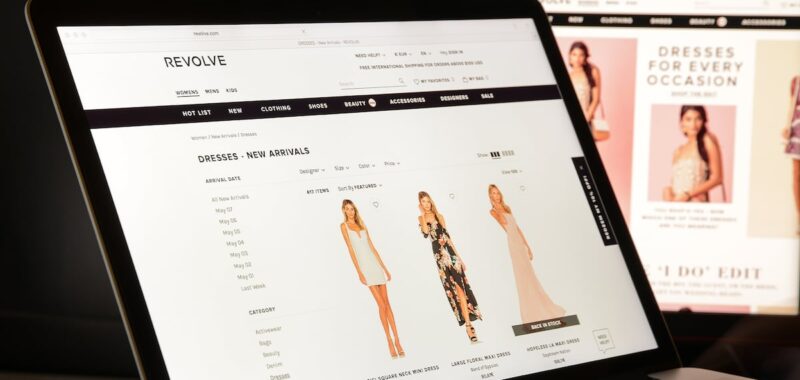
Revolve may be one of the few holdouts in the e-commerce landscape still offering free shipping both ways, but its generous policy seems to be working: Last week, the e-tailer said its return rate dropped for the first time in three years in the latest quarter.
That progress, along with reducing costs in logistics and marketing â including spending $7.5 million less on its Coachella-adjacent Revolve Festival this year â helped Revolve more than double its net income versus the same period in 2023 to $15.4 million. Net sales, meanwhile, returned to growth after five quarters of decline.
Across the industry, retailers from Zara and Uniqlo to REI have imposed some form of online-returns fee in recent years, signalling a quiet revolution in the e-commerce landscape where shoppers can no longer assume shipping is free both ways. Revolve, however, is leveraging an arsenal of tools including sizing technology and personalisation to combat returns and avoid the prospect of pushing shoppers away with extra fees.
âThe stuff that [Revolve is] working on now is more focused on making the customer want to keep [the item] rather than preventing them from making returns,â said Wedbush analyst Tom Nikic.
While the decline in returns is just one quarter so far, the results are a win for the company, which like the rest of the retail industry has been inundated by a tide of e-commerce returns. In the US last year, 17.6 percent of merchandise bought online was returned to retailers, compared to just 10 percent of brick-and-mortar purchases, according to the National Retail Federation and Appriss Retail. Every return can incur shipping fees, costs of processing the merchandise and losses on products that canât be resold, all of which weigh on a companyâs profitability.
Revolve is particularly prone to high returns, Nikic said. It has a customer base made up of young, fashion-focused shoppers who wonât settle for a product that doesnât have the right look or fit. Often theyâll buy multiple sizes of an item to try them on. Based on Nikicâs analysis of Revolveâs publicly disclosed data, the companyâs return rate was 60 percent in the second quarter of 2023. It ticked down to 59.5 percent in the second quarter of 2024 â a small improvement but progress nonetheless.
To get its returns down, the company has implemented a number of measures since last year that it said have begun to take hold. For one, it reverted back to its pre-Covid timeframe for returns, shortening the window to receive a cash refund from 60 days to 30 days. (For store credit, consumers still have 60 days.) It turned to technology and data for more personalised merchandising of products that a customer would be less likely to return. And it has introduced methods to prevent wardrobing, in which a customer buys a product to wear to an event and returns it afterward.
Importantly, Revolve improved the sizing guidance it gives shoppers. In a survey last year, the company found that two-thirds of returns related to size and fit. To address the issue, it has introduced features such as product fit guides, a size-comparison tool to provide sizing recommendations and virtual try-on. It also introduced product videos for certain brands.
âWe see early signs of progress from these tests and initiatives that we intend to scale in the coming quarters,â Mike Karanikolas, the companyâs co-founder and co-chief executive officer, told investors and analysts on the companyâs earnings call last week.
Revolve cautioned that itâs too early to factor that progress into its outlook for the year, and Nikic noted that Revolveâs return rate is still high compared to where itâs been historically. In 2019, it was about 53.5 percent, according to his analysis, or six percentage points below its current rate.
But company executives expressed optimism on the companyâs recent earnings call that the improvements would continue. In fact, the overall industry may be seeing a drop in returns as a result of fees, fit technology and consumers returning to brick-and-mortar shopping.
Insider Intelligence estimated that the volume of returned e-commerce purchases totalled $203 billion in 2022, a large sum but down 2.5 percent from 2021. That dip in online returns came after what it described as âhuge spikesâ in e-commerce returns during the preceding years. The firm predicted the share of online purchases returned will continue to tick down as more customers shop again in stores and as online retailers introduce return fees and adopt technologies to help shoppers find the right size in the first place.
If Revolveâs returns have indeed peaked, it would certainly be welcome news for the company.
âIf thatâs the case and you can bring the return rate down, then you can start to regain the profit margin that Revolve has lost the last couple of years,â Nikic said. Between 2021 and 2023, Revolveâs net income fell from nearly $100 million to $28 million.
The financial benefits could be significant. Karanikolas noted on a call last November that every one-point decrease in the return rate translates to a drop of 30 to 50 basis points in the companyâs combined fulfillment and selling and distribution costs.
Revolve will want all the savings it can get while it keeps giving shoppers free shipping and returns.

